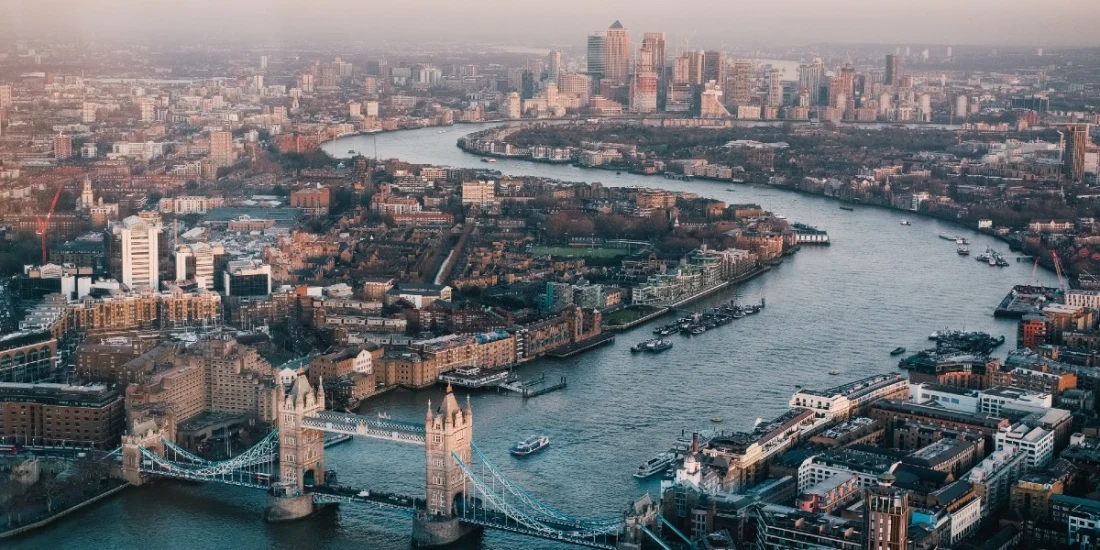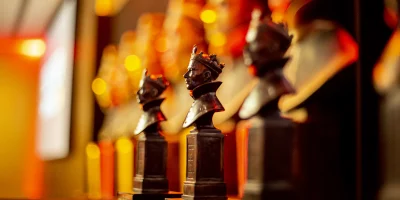
Learn about historic West End theatres in London
London is bursting with world-class theatrical venues of all shapes and sizes, but they've not been open continously. In the 17th century, London's theatres were forced to close in 1642. Puritans deemed all theatres in England to be closed, as going to the theatre was deemed "unseemly." However, theatres were reinstated in 1660 when King Charles II was in power, with two theatres opened under royal licensing: the Theatre Royal Drury Lane and the Theatre Royal Haymarket.
Learn about the "lost theatres" of the city with us, as we take you through some of the busiest auditoriums in centuries gone by. You'll begin to see London in a different light as you learn about theatres gone by in and around the West End, with a map of where theatres would be today.
London Hippodrome
The London Hippodrome used to be one of the leading music halls in London, holding an auditorium with 1340 seats. Opening at the turn of the 20th century, the venue was originally equipped with a 100,000-gallon water tank, where sea lions and polar bears would be made to perform in front of a full house. Throughout the years, iconic performers have graced the stage, including Charlie Chaplin and Julie Andrews. The theatre was converted in 1958 to make way for "The Talk of the Town," where the Folies Bergère would headline performances. Over the years, musical legends including Ella Fitzgerald and Stevie Wonder performed at the Hippodrome, until the theatre closed in 1982. It's back open, with performances of Magic Mike Live entertaining crowds.
Holborn Empire
Also known as Weston's Music Hall, Holborn Empire opened in November 1857, quickly becoming one of the most popular theatres in the capital. Presenting the final variety theatre showcases in the 1900s, the venue also screened feature films from 1914. After World War One, some of the leading names in theatre including Max Miller and Vera Lynn appeared on the stage, until a time bomb exploded outside the theatre in 1941. Hit by another bomb in World War II, the theatre was past the point of repair and was finally pulled down in 1960.
Bedford Music Hall
Situated on Camden High Street, variety performances at Bedford Music Hall entertained the London masses from 1861, later reopening in 1899 after licensing issues. The new theatre was luxurious; marble steps welcomed audiences into the auditorium that had statues of female figures on the sides of the stage. P.G. Wodehouse's plays would regularly be performed at Bedford Music Hall, including The Bandit's Daughter and a comedy revue titled Ha!Ha!!Ha!!! starring Peter Sellers. The theatre closed in 1959 and was demolished 10 years later, however remnants of the theatre are still noticeable if you walk past where the theatre used to be.
Empire Theatre
Throughout its history, there have been three Empire Theatres. The first opened in 1884, entertaining audiences with a "grand musical spectacular" giving the theatre the nickname of "The Empire Theatre of Varieties". The theatre closed in 1927 to then open in 1928, where films were screened until the theatre closed in 1961 due to a necessary reconstruction. The Empire Theatre opened for the final time in 1962. Today, the site is now open year round as a cinema and casino.
London Pavillion
A Grade II listed building, the London Pavillion first opened its door in 1859, later renovated into a music hall in 1885. Ushering in a new era of theatre, the best actors in Britain would perform at the venue, including Lupino Lane who made his professional debut when he was 11. However, the 1934 renovation halted any future productions, due to the cinema conversion costing £700,000, equivalent to £35 million today! The London Pavillion is currently home to the London Trocadero and used to be the location of Ripley's Believe it or Not Museum.
Players Theatre
The Players Theatre opened in 1927, but The Players' Theatre Club did not put their first show on for another decade. However, it grew to become one of the best-known music halls in the world, providing a night of original entertainment to audiences from around the world. Finding a last-minute performance space during World War Two, the club was able to continue holding performances in London until 2002, when the club's priorities changed. The Players Theatre has now closed down, but the club continues to hold performances and galas with the best of Victorian entertainment.
Novelty Theatre
Opening with a performance of Melita or the Parsee's Daughter on 9 December 1882, the Novelty Theatre specialised in comedies, including The Private Secretary and Marigold. The theatre later changed names to the Kingsway Theatre; however, this was a short-lived change of identity. In 1941, the theatre shut down due to war damage, later demolished in 1959.
Alhambra Theatre
Today, the location is now home to a cinema, but the Alhambra Theatre was a popular destination for theatregoers to visit during the 19th and 20th centuries. Alongside a bill of music hall acts, the theatre also staged ballets, operas, and "patriotic demonstrations," with variety nights featuring the biggest stars in Britain. Losing its dancing licence due to a "sexually provocative" can-can in 1870, the theatre moved to performing revues. The theatre went into decline after World War I, eventually demolished in 1936.
Britannia Theatre
The Britannia Theatre was a large performance space in Hoxton, which represented what the common people of London wanted. Those who went to a night at the theatre would be treated to four plays, as well as pantomimes, variety acts and performances of Shakespeare texts. The theatre closed in 1900 due to a fire which caused unrepairable damages.
Toole's Theatre
Previously named the Charing Cross Theatre, the venue underwent renovations to become Toole's Theatre in 1882. The theatre opened with a benefit performance to raise money for the theatre. Although British playwrights including J.M. Barrie would have their plays performed here, the location was not ideal. Toole's Theatre closed in 1896 as a result of the inconvenience caused to Charing Cross Hospital.
The Theatre
James Burbage was the mastermind behind London's first ever theatre, coincidentally named "The Theatre." Costing a measly £700 to build, debates raged throughout the London community for years over whether a theatre was even needed in the capital. But, with Shakespeare's plays staged here before the Globe, "The Theatre" set a new standard for the future of British theatre forevermore.
Dorset Garden Theatre
Shortly after Puritan law ended in England, the Dorset Garden Theatre was built, with shows entertaining the monarchy. A leading venue in the Restoration Era, audiences could see Shakespeare works and grand operas, complete with moving sets; in terms of its scenic capabilities, it was the most decked-out playhouse. Sadly, the Dorset Garden was demolished in 1709.
Originally published on









